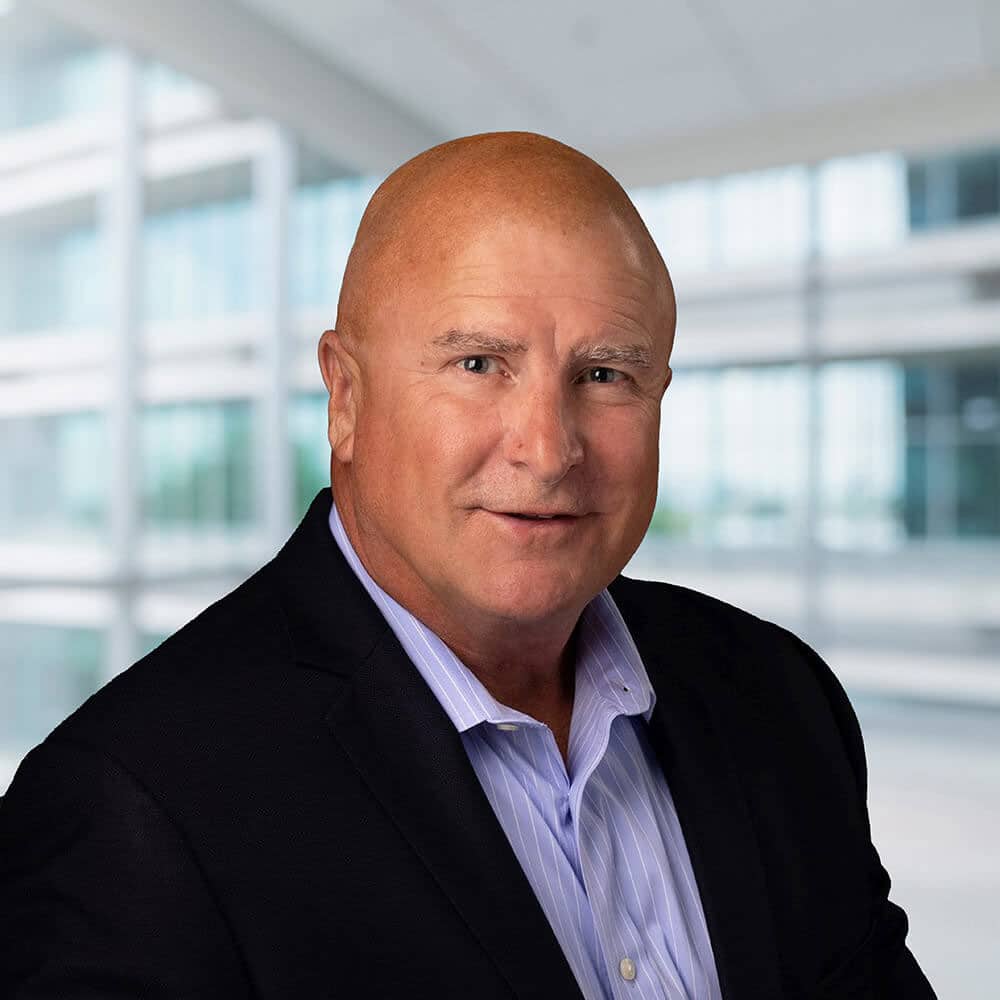It’s been, as anyone reading this knows, a wild few years. Inflation, pandemic, labor and material shortages, supply chain snafus, technology disruptions, global political upheaval. You name it, we’ve all faced it.
But if you think we’re out of the trees, or even nearly so, you’re kidding yourself, says Chip Kaye, the longtime CEO of Warburg Pincus, the private equity powerhouse with $82.6 billion assets under management. And it’s a dangerous time to be kidding yourself.
From his unique perch at key intersections of the global economy, he’s seeing generational, structural changes underway that he says far too few business and financial leaders are prepared to face, an environment with long-term inflation lingering above managers’ and investors’ expectations, coupled with a level of great-power rivalry and geopolitical uncertainty unseen since the Second World War. His prediction: a bumpy ride for those who don’t understand what’s happening—and what will happen—in the next few years. And that was before the current disaster in the Middle East.
“Things have [not] really repriced yet for that world,” Kaye told Chief Executive in an onstage interview at our PE Leadership Summit in New York this fall. “But this is a very different dynamic than I’ve seen. The fact that it’s been more benign for the last year, year and a half, than you might have thought continues to lull us into a complacency that it’s all going to be just fine, and maybe it will. One of the things I’m a fundamental believer in is inherent uncertainty. You can’t know the answers to these things, but if you’re a CEO of any business today, you’ve certainly got to worry more about what those tail risks look like.”
Kaye is in a position to know. Since it was established more than 55 years ago, privately held Warburg Pincus has been at the core of the explosive growth of private equity worldwide, investing more than $112 billion in more than 1,000 companies in over 40 countries during its history. For the last 20 years, Kaye has been running the firm (he started his career at Warburg in 1986 and led the firm’s entry into Asia in 1994), earning a following as one of the most experienced and respected figures in all of global private equity. He’s a steady hand who shies away from trendy momentum plays, burnishing the firm’s long-standing reputation as a growth investor and a strong partner for management teams.
Chief Executive caught up with Kaye in September, just as he closed a new $17.3 billion fundraising effort—an impressive result, made even more so by the uncertainty and volatility during which it happened.
We asked Kaye to give CEOs—no matter their ownership structure—a look around the corner to 2024. The following conversation was edited for length and clarity.
What are you paying a lot of attention to that you think the rest of us should be paying a lot of attention to?
There are two things that, for the last couple years, have struck me as very different about this moment relative to anything I’ve seen in my career.
One, we haven’t really dealt with inflation for a long period of time. We dealt with it in the ’70s, but since then we’ve been a pretty benign environment, an environment with lots of cyclical dynamics within it, but a pretty secular, steady decline in inflation [and] in rates over a 40-year stretch that, frankly, drove a lot of return dynamics in private equity investing more broadly, underpinned by globalization and technology shift. Those were some very powerful forces at play.
For a variety of reasons, it feels to me as if there are as many things to worry about being headwinds as there are tailwinds. You look at global supply chain, energy transition, fiscal dynamics, maybe AI offsetting on the other side a little bit, but it feels like we’re more likely to return to at least a slightly higher inflation environment than what we lived in for the last 10 or 15 years, maybe longer. Long rates may look more like four or five than two or three.
The second big issue is we haven’t had great power conflict, and we certainly haven’t had great power conflict between two economically interdependent countries that represent 40 percent of global GDP.
We were trying to figure out the last time in history this has even happened.
You obviously had the Cold War dynamics, but they were pretty economically segregated. You can go back and try to create some parallels, but this is a very different dynamic that we’re experiencing. For a long period of time, most people didn’t have to worry a lot. You may have been interested in geopolitics, but it wasn’t the front-and-center issue that you had to worry about. Now as a CEO of any business—and certainly ours—you have to worry about it.
The combination of those two things is very different. The environment ahead is a perfectly manageable one, but the transition from the one we’ve been in for the last 15 years to that [new] one can be somewhat painful. What businesses have the ability to manage through that, have pricing power or the like that can manage through that? Who bought things on that basis, and who has the tenure or the liquidity to have the time to manage through all of that?
Talk a little bit about how you’re seeing the psychology have to shift to keep up with the changes. Where is it falling down, and what do you need to do about it as a CEO?
Well, there are two dimensions of it. You can take more of an investing lens and say most people’s careers are probably less than 15 years. So, they haven’t seen that. One of the reasons everybody is so into the recession forecasting at the moment is there’s this belief that somehow the recession comes and rates drop, and then we’ll all be good again. That’s an easy answer.
For people who are in operating roles, the way I’d phrase the issues or the challenge is slightly different. The reality is that for lots of businesses, what people were measured on and encouraged to focus on wasn’t necessarily profitability, right? Everybody was fixated on revenue growth. Because at low rates, if you could grow revenues greater, the discount rates mattered a lot. So all of a sudden this mindset shifts, but shifting that dynamic inside of a business is not something you do overnight. The incentive structures on both an investing and an operating perspective were affected by the impact of very low rates that shifted the goalposts in ways that are now shifting back.
Those shifts are hard. They’re complicated. People felt like, “Well, gee, yesterday I was getting measured on some revenue multiple, and everybody wanted to know, how big can my burn get? Then overnight I get told, ‘Forget all that, it’s profitability I want to go worry about.’” That transition is hard.
The last thing I’d say is investors don’t always necessarily have the right empathy for what it’s like to actually sit in the chair operating a business. Those perspectives can be different, and they can make it harder.
You’ve told me that if there was one thing that you would focus on in a business—and where you would invest and where you wouldn’t—it would be the ability to show pricing power. Why is that so fundamental for you? What do companies need to make that happen?
The point was that you can’t predict what’s going to happen. We may have opinions, but the reality is none of us really know. What you want to focus on are businesses that have the ability to adapt.
At the moment we sit in today, pricing power matters a lot because what it tells you is that however your cost structure evolves and changes relative to supply chain and labor and commodity price or whatever else it may be, you have the ability to pass that on because you are “need-to-have” to your customers.
To the extent you’re not, that’s a more difficult place to be, and it shortens runway more than anything else and gives you less of an ability to ultimately manage through. One of the reasons all this has had a little bit of a delayed element to it is that most people had extended out debt maturities, they had raised a lot of capital. The wall still probably doesn’t feel imminent. It’s getting closer though.
You think so?
Yeah, you’re starting to see it. You look at a number of companies and say current operating cash flow may or may not completely cover interest burden, you look out and say, the maturity’s coming, and could I refinance at the same quantum that I have today? There is some number of companies for which that’s not true. I saw something recently—I think it’s 30 percent of public companies don’t have cash flow to manage current interest burden. So, I don’t think this is just a private-sector phenomenon. It’s broad. A lot of debt doesn’t have covenants, lots of other things, so this isn’t necessarily imminent, but it’s out there.
One of the folks in your shop is former U.S. Treasury Secretary Tim Geithner. What’s he saying?
Tim and I have worked together for 10 years, and I have huge respect for his judgment. Probably the thing we share most is our respect for uncertainty. The worst habit we all tend to fall into is having excess confidence in our own judgment about things. We all tend to think we’re somehow really good at predicting stuff, when the history of the world says we’re not very good at it. Therefore, you might be better off spending your time on thinking about how to prepare for what the tails look like as opposed to what my point-specific opinion may be.
But his view wouldn’t be different from mine. If you had to look and say what the long rates feel like they will be over some period of time, they probably feel more like they’re four or five than they are two or three, just to pick a rough range. And we’ve lived in that world.
Which is actually healthier than zero.
Which is already going to be healthy, but the transition from one world to the other is what’s painful. We talked about it from a business point of view, and even as a private equity firm, those transitions are tough. You somehow have liquidity dynamics around you, you have the capacity to extend time, duration and the like. The challenges are buried in that.
It’s the tail risk around ultimately where rates settle that is one of the big issues. The other is, obviously, as I alluded to earlier, the complexities of having to navigate through a more complicated geopolitical moment.
If this is the thesis and this is what you’re seeing, what are your teams counseling the CEOs running the companies in your portfolio?
We probably have two people who are the most busy. One is on the pricing side of what we do. And the other is everybody’s going through the zero-based budgeting, fuel for growth, whatever you want to call it, but the reassessment of, “the world shifted on me, and I now need to go back and look at cost structure and decide what growth investments I really am prepared to make and what I’m not so that I am most focused on cash that gives me the ability to control my own destiny.”
What’s your sense of how the PE industry and portfolio companies are performing—not just yours, but across the board? If you were to grade it, how’s everybody doing?
First of all, there’s huge variability, right? There are businesses that really benefited from what happened in the midst of Covid and are now dealing on the other side of it. There are others that were completely decimated by it, and their challenge is, “How do I rebuild the function that I probably took out or dramatically changed?”
The challenges are very different, but the tone of business is pretty good. It’s good but not great. And it’s way more complicated. Everybody’s dealing with huge labor issues that have maybe subsided ever so slightly, but not a lot, and commodity stuff and supply chain stuff, which all are maybe slightly better in pockets, but still complicated. If I looked across our stuff, I’d say the places that are doing better are those that have been able to push price. It’s a nice thing to say. It’s a really hard thing to do.
Why is it so hard to do?
Well, the first thing everybody does is they go ask their salesforce, “Would you like to raise the price?” And the answer is no. Nobody goes and polls their customers and hears, “Yeah, you should raise the price on me,” or from their own salesforce. It’s a really hard thing to do, and it also tends not to be a straightforward thing. The answer is rarely, “I’m just going to raise my price by x.” It’s how you create tiers and how you create ways to go about it that are much more complicated, and the way packages get presented to customers and the like. So, it’s a much more nuanced thing than, “I’m just gonna take it up by x.”
Sometimes it’s difficult to make the direct connection to the geopolitical and what’s going on in China. But as a lot of people are talking about decoupling, about China plus one, that’s going to add cost. How do you see that becoming a subtle inflation driver?
The manufacturing value-add in China is about the same as the U.S. and Europe combined. Over the last 30-plus years, China became the manufacturer to the world, and over some long period of time, I suspect that will shift. But the key words are “long period of time.”
People want it to happen instantaneously. I suspect even anybody whose business is here that has direct connection to the supply chain there is probably getting asked by their board, “Well, what are we doing to de-risk…?” That’s a better-sounding word than decouple. I’m not sure of the difference. The answer—I kid around—the first thing most CEOs do is they say, “Well, we’re going to hire a consultant to go think about it so we can debate it for a year or two,” because we actually don’t know the answer to that question.
Look, everyone will find an answer. It’s less that you’re seeing investments migrate than that you’re seeing marginal capacities get added elsewhere and people wanting to create redundancy around it. Although when you talk to a lot of people, what you tend to hear is pieces of the supply chain move. But often there still are critical components that are buried in the bottom that are still there. By definition, the answer is higher cost, or you would’ve done it. I don’t think there’s a magic-bullet answer. We invest in Vietnam, we invest in India, we know both incredibly well, Mexico to a lesser degree, but we know it too. There are pieces to the answers buried there and elsewhere, but I don’t know that there’s one spot that’s the easy answer to it.
Then you still have to address, “Well, OK, I’ve moved pieces of my supply chain, but is there still something sitting underneath it at the bottom that still creates dependency across all of it?” Certain categories are incredibly high cost, semiconductors being an interesting example. In some sense, whole industries may only be profitable at global scale. So, to the extent you start creating separate ecosystems around it, you diminish the aggregate profitability of both.
I’m trying to stay away from the politics of all of it because it is what it is, but the reality is the economic impact of that feels like inflation to me. Every time I hear supply chain resilience, friendshoring, nearshoring, all of that, I hear inflation.
Talk a little bit about the relationship between CEOs and investors right now. Obviously, a lot of companies went in with a thesis; that thesis is no longer real. What do CEOs need to do in order to keep the relationship strong?
It’s a really good question. I don’t know that there’s an easy answer for it. Certainly from where we sit, the fundamental thing you want to have is healthy dialogue where you can share the open, honest reality of what is happening. From our end, the thing you hate the most is where you feel like someone’s hidden the pea on you in order to think you can somehow navigate around it. By the time you then figure out where it sits, you’ve maybe missed the moment to have had a more constructive, productive conversation about what to do.
I get it; there are probably some firms that don’t necessarily behave in ways that encourage that degree of candor. Frankly, the relationship between an investor and a CEO should be one of the most sacrosanct, personal relationships. The investors should be somebody the CEO should feel comfortable about talking with about anything. Good investors, in my mind, are respectful of the fact that they’re not operators. But they often have a useful perspective that can be helpful in those moments.
Where it works best is where that is a really healthy dynamic and usually tends to be pretty personal. It’s nice to think it’s the firm and the company. But usually it’s got a personal flavor to it. One of the things I always say is you have to make it personal to people. It’s nice to think we can bring these resources and do that, but usually, under the hood there’s some trusted relationship that sits at the core of that.
Anything else CEOs can be doing to develop that relationship and make sure that they’re nurturing it?
Well, look, parts of how the [private equity] industry has evolved at times has made that harder. There are places where you’ve got alphabet soups of capital structures with lots of different people in it. And CEOs can often feel that part of their job is to manage this disparate set of investors.
Good, thoughtful investors actually have an appreciation for what they do well but a deeper appreciation for what they don’t. Good investors at the moment also realize the goalposts have shifted. Acknowledge it, step up. I always kid around that when we look back and postmortem things we’ve done, every time something goes well it was a brilliant investment. If it doesn’t go well, management screwed it up. Reality is somewhere in between.
But it’s the environment ahead that feels harder to me—getting that relationship right and both sides acknowledging the set of assumptions that was made up front that might be different because the environment changed. It’s not necessarily a fault thing. The environment shifted; it feels, in my view, at least reasonably structurally changed.
The senior management team might be underwater. They’re certainly, in many cases, far out past the time horizon when they thought they were going to be having a liquidity event. What can you do to make sure that the band doesn’t break up?
All of those are legitimate. You’ve got [investment] firms having to deal with the reality of where they sit in all of this as well. To me, one of the great positives of the private equity world that sits underneath the hood, and the reason it is so successful as an asset class broadly—and particularly in relation to public markets, which I view as more broken—is the simplicity of the incentive structure that exists.
In most cases, there’s a very simple deal, which is, “We bought it for x, if it’s worth more than x, we’re going to have a discussion over what the division of those spoils are.” Once you’ve done that, the incentive structure’s pretty clear. If, every once in a while, you need to recut that, people understand that that’s the deal. But the incentive structure is what drives our industry. Underneath all of it, it’s what drives the outcomes.
Not picking on anybody, but there are a lot of financials that don’t quite do what they’re supposed to do. They’re supposed to dampen volatility, but they don’t really do that at the moment. Private equity has done what it’s supposed to do. However you measure it, it has earned excess return to public markets over long periods of time. Personally, I think it’s because the incentive structure is very simple.
There’s been a real productivity lull in the U.S. for a few decades now. We hear so much about AI these days—what’s your sense of technology and how to start deploying that?
I don’t know. Like all great technologies, and AI is very clearly one, you have to separate the hype from the reality. They’re both present. Somehow there’s this notion that it will instantaneously reduce the cost to deliver for everything. That’s probably not really right. If you actually spend some time studying it under the hood, you start to realize where some of the extreme limitations of it come from. But don’t be too skeptical. There’s a reality to it.
One of the interesting things we’re doing right now is we’re taking a few of our companies that we think have really good use cases for how to apply AI on a differentiated basis. It’s not just general use, it’s because you have access to data that nobody else does. You can apply AI to create a differentiated product that your customers will see, that will be valuable to them and that you can raise your price on. We’re playing out a couple of those. Obviously, we think it’s good for the company, and it’s being driven by them, but we’re also looking at it as a way to say, “Well, if these are the best cases, what was the reality? What really happened? Where did we change cost? How did we change revenue?”
So we can then think about how to take some lessons learned from that to apply elsewhere and try to modulate the raw enthusiasm to go throw dollars at something that may or may not really be valuable. We’re trying to learn where the use cases are that are most effective, because there’s [something] real to this. But financial markets in particular tend to jump to conclusions before they realize all of the difficulties of navigating through.
People would love to know your opinion on the exit market for 2024, 2025. What’s your sense given all of the headwinds you’ve been talking about?
A big part of it is people getting to a point where they need to accept reality. I would say that there’s been huge discernment around quality. Incredible, high-quality businesses could still go put themselves out, try to get competitive tension, and, if they did, they could sell themselves for prices that didn’t look dissimilar to what they were before. But the moment you dropped anywhere off the highest-quality scale or where you lost competitive tension, the gap was meaningful. In most cases, what that meant is people pulled.
If you talk to bankers, they would express frustration over trying lots of things, and their success rates are very low. They’ve got this terrible dynamic of doing a lot of work and getting paid less. That’s been their challenge. Because there is still this hope that sits out there that I paid x or y multiple and I don’t really want to accept x minus something, maybe it’s going to get better. I don’t have to do anything today. I don’t really think reality has yet to settle in. And if it doesn’t have to settle in, why are you forcing it to settle in? Why crystallize? That’s a lot of what’s at play. That’s out there in private equity world. Public markets are harder to comment on. In many ways, they’re more broken.
When you say that, what do you mean? You’ve said it twice now.
How much liquidity is there outside the top 50 or 100 stocks? When I joined the firm, the badge of honor was getting to take something public. We have lots of businesses we’ve taken public—we’ve been the principal financial investor in probably 150 businesses over the course of our history, and some of them are gold-plated and phenomenal public companies today.
So it’s always a piece to the puzzle, but it’s a harder row. It’s a more difficult path for CEOs, and it’s not necessarily the great liquidity answer from an investor’s perspective. If you’re a public market investor, the defined universe of what you can buy and sell is a bunch of buttons on a screen. In a private context, you can go create stuff.
How do you see all of the change that you’ve been talking about impacting the PE industry itself?
I always remember when I first joined Warburg Pincus 38 years ago, Lionel Pincus and John Vogelstein, our founders, used to say there were a lot of things about our industry they could never imagine—the one thing they never imagined was its scale. We formed our first fund in 1971. It was a $40 million fund. And as they always reminded me, that felt like all the money in the world then. The scale today is obviously quite different. I probably feel the same way relative to the time I took over as CEO in 2001. Assets are probably around 10 times over that period of time. The scale’s pretty amazing to see.
A large part of it is that [private equity] has done what it’s supposed to. The whole idea was that you could trade illiquidity for a return, on average, that would be in excess of public markets. However you measure it, that worked. Frankly, if you start disaggregating public markets and the Magnificent Seven and all of that stuff, even more so. So, that idea of finding talented entrepreneurs that you can go build a business with, that model, the idea of that form of capital and the incentive structure that exists between an investor and operator has structurally done its job. And it’s why this industry continues to grow. The core private equity business is an amazingly powerful force.
The post New World Disorder: Warburg Pincus’ CEO On Navigating 2024 appeared first on ChiefExecutive.net.























































![5 Ways to Improve Your LinkedIn Marketing Efforts in 2025 [Infographic] 5 Ways to Improve Your LinkedIn Marketing Efforts in 2025 [Infographic]](https://imgproxy.divecdn.com/Hv-m77iIkXSAtB3IEwA3XAuouMwkZApIeDGDnLy5Yhs/g:ce/rs:fit:770:435/Z3M6Ly9kaXZlc2l0ZS1zdG9yYWdlL2RpdmVpbWFnZS9saW5rZWRpbl9zdHJhdGVneV9pbmZvMi5wbmc=.webp)














